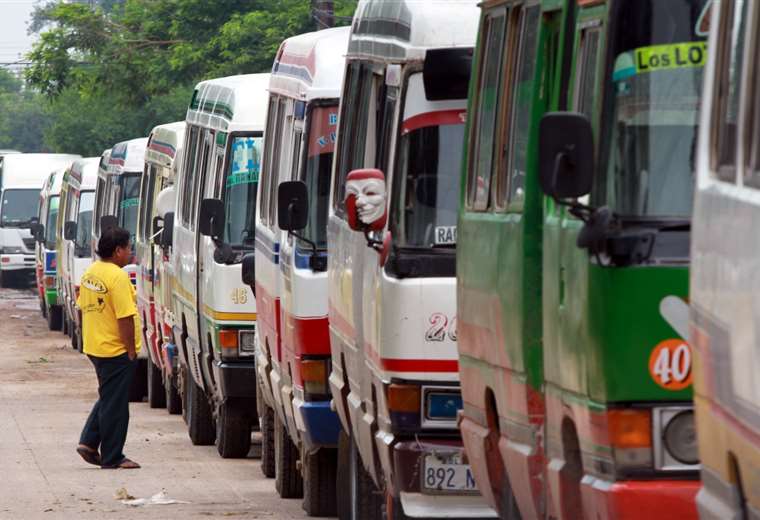Thanks to the good performance of coffee production, grain exports are having a positive dynamic in the country. However, Working on international regulations and improving sector costs continue to be a challenge.
(See: Production of coffee bags in September soared by 26%, according to the FNC)
In conversation with Gustavo Gómez, executive director of the National Association of Coffee Exporters of Colombia (Asoexport), it was stated that at the Coffee Summit held in the first week of November, These regulatory issues will be addressed, but also the dynamics that are being evident in other countries.
With the good performance of production, how are exports?
Greater coffee production is associated with more exports. The increase in production over what the Federation calculates is 20%. That is, from October 2023 to September 2024 it went from 10.6 million to 12.7 million and exports in that sense had a growth of close to 15%, they went from 10.3 million to 11.9 million bags. .
It is an issue that is due to the El Niño phenomenon. Contrary to other crops, in coffee, greater production is associated with more sun, yes, in its correct proportions and alternated with rain. The more coffee we have, the more we can export.
(Read: Specialty coffees could be the engine of Colombian rural development)
How do you see the purchase in cherry coffee?
It is a step that is being taken. When one looks at purchasing in cherry versus parchment, it is a very small percentage. Most people still sell parchment. Some exporters are also doing it, they are joining the strategy of setting up processing centers, especially in Huila.
This is a process that may take time, but in the end all the things that contribute to the quality of the coffee improving are excellent for the sector.
(See more: Juan Valdez opens his first store in the Dominican Republic)
Coffee
iStock
What destinations are you exporting to?
There is the United States that buys more than 40% of the production, followed by the European Union as a region. We are closely following the whole issue of the European Green Deal, where until now we hope that the entry into force of the zero deforestation part will be extended for another year. There is a modification project that seems to be approved in the coming days.
But what is also being interesting is the Asian market, especially China. In the first quarter it became the second most important for coffee and has been growing in double digits over the last six years. Specifically in 2023 it increased 132% and so far this year it has grown more than 190%.
(See also: Analysis: the effects of the increase in the price of coffee for the country’s growers)
How do you see the opening of the Chinese market?
It is one of the countries with the largest population in the world. China is at a time when it is learning to drink coffee and it is young people who are doing it, which is why it is a guaranteed market, not only now but in the future. Being able to participate is essential. It is key that the Government when it enters into the negotiations, which are now in a diplomatic field, takes coffee into account.
Currently, coffee in China has a tariff and our competitors, such as Brazil, Vietnam, Africa and Honduras, are making approaches to be able to enter with a privileged tariff. The diplomatic and commercial relationship with China is important so that our coffee can also enter with preferential access.
(See more: The effect of durian, the smelliest fruit in the world, on the rise in the price of coffee)
Have you seen challenges in logistics?
We have been working with port terminals and shipping lines and we have organized the processes very well. Along these lines, in general terms, coffee exports have been fluid.
We are watching with considerable care, fear and concern, the blockades on the roads, especially towards the south of the country in Cauca and Nariño. All the coffee produced there leaves through Buenaventura and the blockades and situations of security disruption greatly harm the operation of that area of the country.

Coffee
iStock
They will celebrate the Coffee Summit in a short time, what expectations are there?
It’s going to be a very interesting agenda. First, due to the presence of the Government where the Minister of Finance is confirmed and the manager of the Federation. There the perspectives of the sector will be addressed a little. For example, we are in a scenario where if we had more coffee we could export more and have better benefits and income for the coffee-growing areas of the country.
Issues of supply and demand, the issue of price, etc. will be addressed. Also, the behavior of other countries such as Brazil and Vietnam. Even Central America has a very serious labor problem due to migration to the United States. That is why the only country that has established itself as a reliable origin of coffee is Colombia. The interesting thing is to be able to see this analysis, not only of what is happening in Colombia, but in the world, both in production and consumption.
Another is the issue of the European Green Deal. We have been working with the Federation because there is still an issue of legality that must continue to be defined. One of the panels is even precisely about what is happening in the North American industry. One of the risks that there may be is that the United States takes the legislation of the European Union and applies it. There it would no longer be only 20% of the production impacted, but 70% of the coffee that should be subject to this regulation.
(Read: Juan Valdez becomes the official cafe of the Chicago Cubs and Wrigley Field)

China
iStock
Is coffee being a profitable sector?
At this moment yes, but via price. It is not that we are being more cost efficient, because labor continues to be a major challenge for the sector, but international prices have helped a lot. However, one of the big questions is how long are we going to charge at these prices?
And how much can this affect consumption, because in the end, what is happening is that the industry’s raw materials tripled and that can be reflected in an increase in the price of the product and the demand for coffee, it is elastic with the price. . If it increases too much, people stop drinking coffee. That is why there is a lot of work on cost issues.
(See also: 88% of Colombians drink coffee at least once a week)
What other challenges do you see?
The issue of sustainability is the challenge. When you start to see Farm to Fork, the Green Deal and all the regulations that come from international countries, you see a wave in this matter. People are very concerned about climate change.
And along those lines, the consumer wants sustainable products and to contribute. Positioning itself as a country that, contrary to promoting deforestation, is reforesting, carbon captures, has regenerative agriculture, etc., that should be Colombia’s commitment. And that is the strategy or the biggest trend that occurs in the future.


















